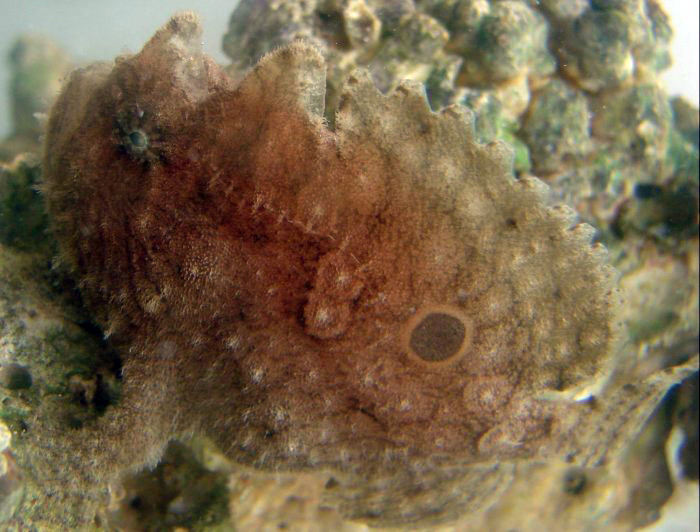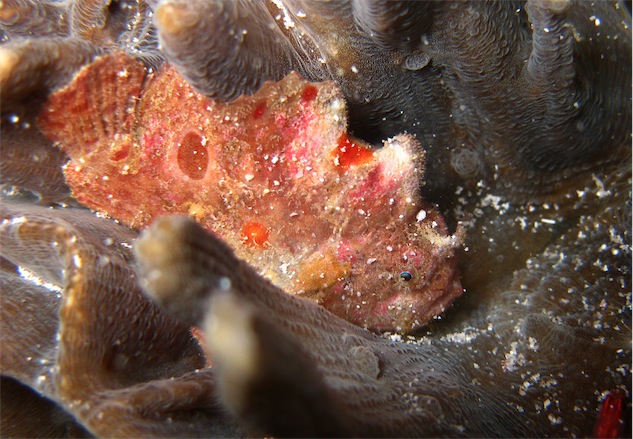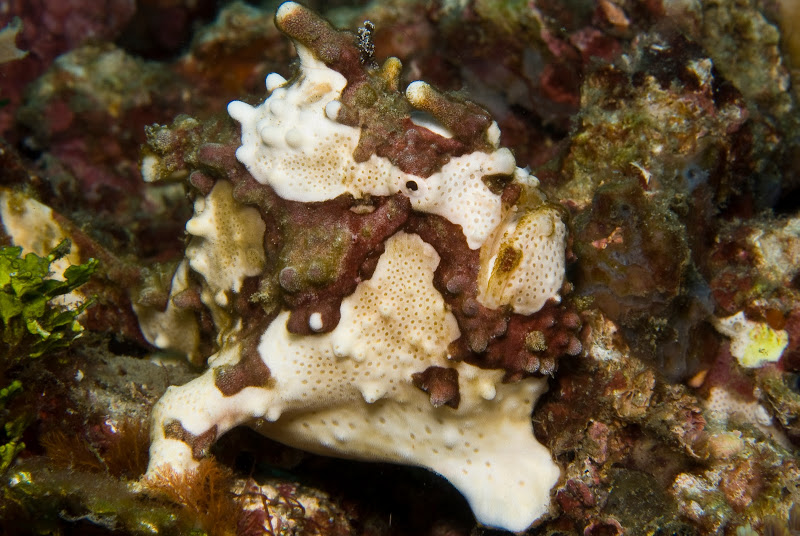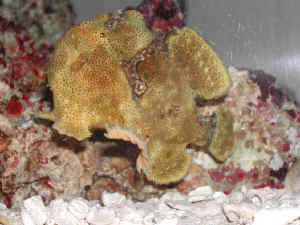
Antennarius radiosus
FAMILY
Antennariidae
TAXONOMY
Antennarius radiosus Garman, 1896.
OTHER COMMON NAMES
English: Singlespot frogfish.
PHYSICAL CHARACTERISTICS
The big-eye frogfish has skin with closely set, forked dermal
spinules. The illicium is about as long as the second dorsal fin
spine and has no dermal spinules. There is a single dark spot
(ocellus) surrounded by a lightly colored ring below the posterior
portion of the soft dorsal fin.
DISTRIBUTION
The big-eye frogfish occurs in the western Atlantic Ocean
from Long Island, New York, to Florida and across the northern
Gulf of Mexico. It has been reported from the eastern Atlantic,
but it is apparently very rare there. It has been taken at
depths ranging from 20 to 900 ft (6–275 m).
HABITAT
Like other members of its genus, the big-eye frogfish is benthic.
This species is primarily an inhabitant of mud bottoms. It
is commonly taken by shrimp trawlers in the northern Gulf of
Mexico, and it is frequently found in deeper portions of
higher-salinity estuaries.
BEHAVIOR
Unknown.
FEEDING ECOLOGY AND DIET
Like other frogfishes and most other anglerfishes, the big-eye
frogfish is a voracious ambush predator and will take any prey
it can capture.
REPRODUCTIVE BIOLOGY
Unknown.
CONSERVATION STATUS
Not threatened. A significant death rate may result from those
that are taken as bycatch by shrimp trawlers.
SIGNIFICANCE TO HUMANS
None known.
Other popular Animals
Photo Gallery of - Big-eye frogfish





 Animalia Life
Animalia Life